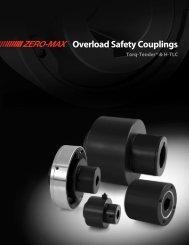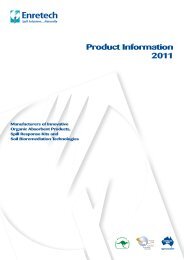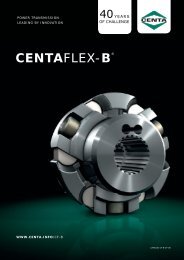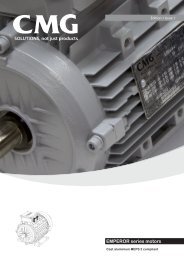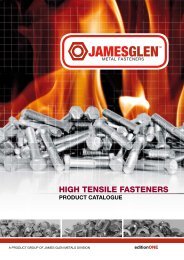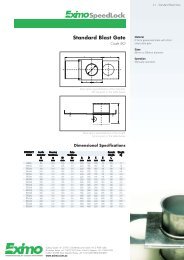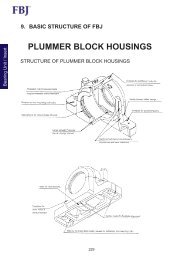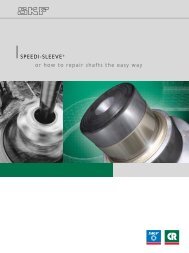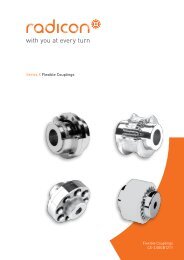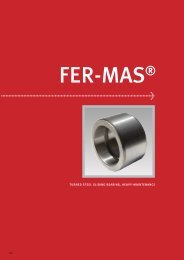Download - Industrial and Bearing Supplies
Download - Industrial and Bearing Supplies
Download - Industrial and Bearing Supplies
Create successful ePaper yourself
Turn your PDF publications into a flip-book with our unique Google optimized e-Paper software.
136 Transformers<br />
TECHNICAL<br />
Principles of operation of the<br />
Safety Isolating Transformer<br />
A transformer transfers electrical energy from<br />
one circuit to another through the medium of<br />
a magnetic field. The transformer may step up<br />
the voltage, step it down or deliver energy at<br />
the same voltage.<br />
The safety isolating transformer is one of the<br />
most widely used of all transformers. It is<br />
designed to achieve an accurate voltage ratio<br />
within a specific load range.<br />
There is no direct connection between the<br />
windings. They are only connected by the<br />
intangible lines of magnetic flux in the core. In<br />
some types of circuits the transformers may<br />
have 1:1 ratio.<br />
Long life<br />
Because of the long hours of use, low voltage<br />
transformers have to be designed <strong>and</strong> built<br />
to a high specification, which involves the<br />
use of quality heat-resistant materials. Class<br />
H insulation materials ensure long service<br />
life, which, according to EN60742, allows a<br />
maximum winding temperature rise of 140°C<br />
at 6% over voltage.<br />
At an actual winding temperature of 130°C,<br />
10 years life can be expected. The graph<br />
above shows the theoretical service life of<br />
a transformer against winding temperature.<br />
Every 10°C over the winding temperature of<br />
130°C, halves the transformer life.<br />
The manufacturing technique used by Hella<br />
is to vacuum impregnate the transformer<br />
with an unsaturated polyester resin. Typical<br />
characteristics are thermal class ‘H’ (180°C<br />
IEC600). Vacuum impregnation improves<br />
quality <strong>and</strong> longevity because the resin is<br />
drawn into the heart of the core <strong>and</strong> coil. This<br />
maximises heat transfer <strong>and</strong> also ensures<br />
silent operation.<br />
Safety Extra Low Voltage (SELV) Lighting Recommendations<br />
Voltage Regulation<br />
The secondary voltage of a transformer<br />
changes with the load, therefore, for multilamp<br />
applications, a transformer with good<br />
voltage regulation must be used. This is<br />
because unloading of the transformer occurs<br />
as lamps burn out, eg: there may be 4 x<br />
50W lamps wired to a 200VA transformer<br />
<strong>and</strong> if one or two lamps fail, the transformer<br />
regulation may not be able to compensate<br />
for the decrease in load. This will subject<br />
the remaining lamps to an over supply<br />
of secondary voltage. Therefore, it is<br />
recommended that failed lamps always be<br />
replaced.<br />
On a one lamp/one transformer installation,<br />
the regulation of the transformer is not<br />
important as long as the lamp wattage<br />
matches the full load of the transformer. These<br />
small transformers generally have higher<br />
impedance <strong>and</strong> regulation characteristics.<br />
It follows that the higher impedance limits the<br />
in-rush current on a cold lamp.<br />
The lower in-rush current (or “soft start”) helps<br />
lamp life. Filament evaporation eventually<br />
creates a weak spot on the filament. This<br />
weak spot is effected by in-rush current. As a<br />
result, the one lamp/one transformer system is<br />
beneficial for ferro-magnetic transformers, but<br />
does not apply for correctly rated electronic<br />
transformers.<br />
High current on the<br />
secondary side<br />
Another important consideration in Extra<br />
Low Voltage systems is the impact of high<br />
currents. Circuits must be designed <strong>and</strong><br />
cables sized to carry the higher currents. A<br />
12V lamp can draw 20 times more current<br />
than a 240V lamp of the same wattage.<br />
For maximum safety, optimum voltage at the<br />
lamp <strong>and</strong> consequently lamp performance,<br />
it is preferable to use one (1) ferro-magnetic<br />
transformer per lamp.<br />
On multi-lamp systems, each lamp should be<br />
cabled back to the transformer independently,<br />
particularly as the relatively smaller cables<br />
used would be more practical <strong>and</strong> easier<br />
to terminate at both the light fitting <strong>and</strong><br />
the transformer. In these installations it is<br />
necessary to estimate voltage drop to each<br />
lamp <strong>and</strong> use the appropriate sized cable<br />
according to each cable run. If each light<br />
fitting in a multi-lamp system individually<br />
wired back to the transformer, then the<br />
possibility of using cable lugs to a common<br />
stud connection should be considered.




